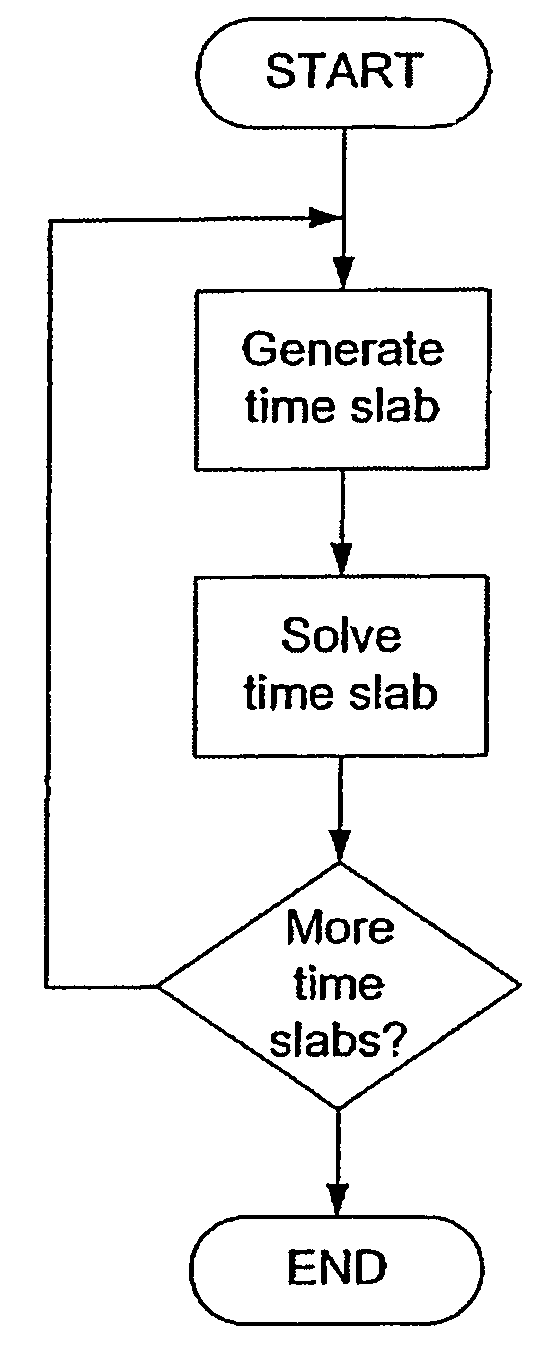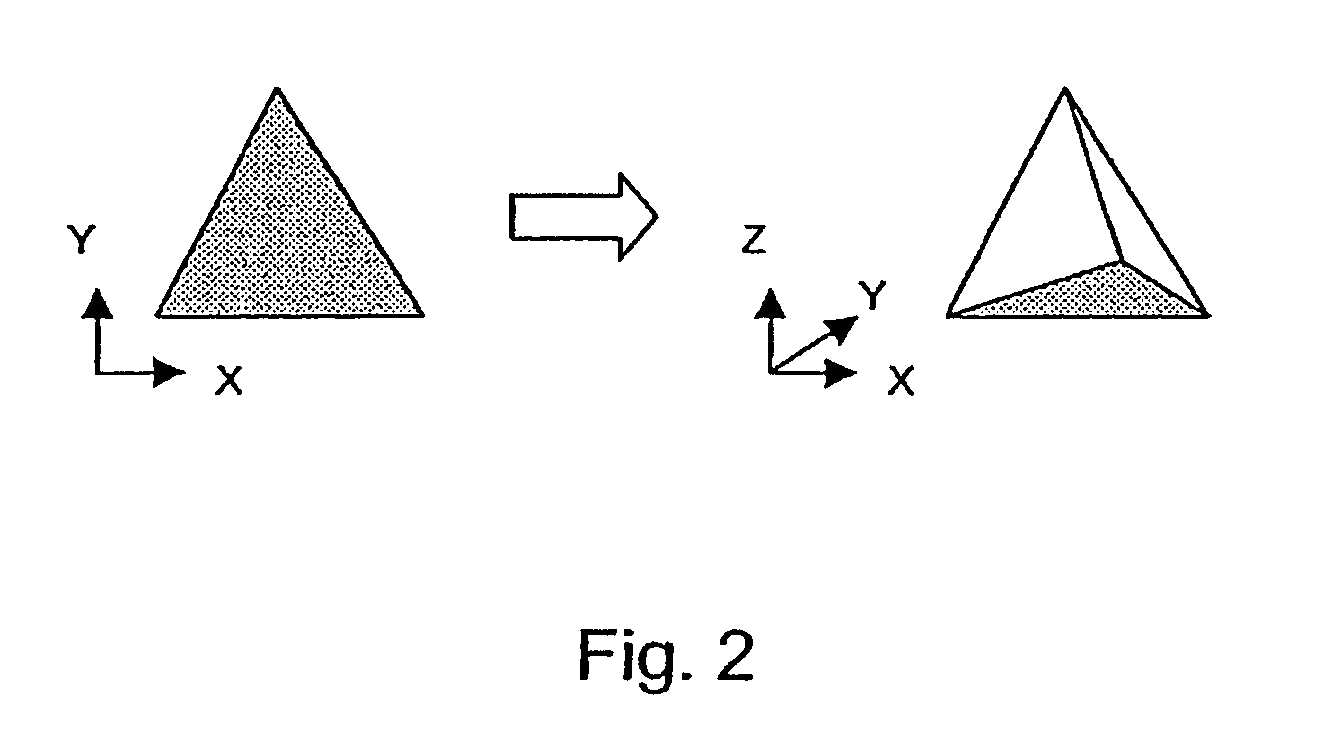Method for solving finite element models using time slabbing
a time slabbing and finite element technology, applied in the field of methods for modeling physical systems using finite element analysis, can solve the problems of not being able to localize the smaller time steps to a particular physical volume of interest, and more complicated means to model physical systems, so as to achieve the effect of reducing memory usag
- Summary
- Abstract
- Description
- Claims
- Application Information
AI Technical Summary
Benefits of technology
Problems solved by technology
Method used
Image
Examples
Embodiment Construction
[0020]A preferred embodiment of the invention is described below. It should be noted that this and any other embodiments described below are exemplary and are intended to be illustrative of the invention rather than limiting.
[0021]The present method is particularly well-suited to solving space-time problems involving three-dimensional space. In the prior art, three-dimensional finite element models were solved for a particular point in time. Put another way, the models were three-dimensional instead of four-dimensional. If a solution for the three-dimensional model over time was required, the three-dimensional model was solved for a first time value, then for a second time value, then a third, and so on. Thus, the finite element model was not a four-dimensional model, but was instead a three-dimensional model which was stepped over a given range of time values. The series of three-dimensional solutions to the three-dimensional model could then be combined to construct a four-dimensi...
PUM
 Login to View More
Login to View More Abstract
Description
Claims
Application Information
 Login to View More
Login to View More - R&D
- Intellectual Property
- Life Sciences
- Materials
- Tech Scout
- Unparalleled Data Quality
- Higher Quality Content
- 60% Fewer Hallucinations
Browse by: Latest US Patents, China's latest patents, Technical Efficacy Thesaurus, Application Domain, Technology Topic, Popular Technical Reports.
© 2025 PatSnap. All rights reserved.Legal|Privacy policy|Modern Slavery Act Transparency Statement|Sitemap|About US| Contact US: help@patsnap.com



